Camera settings for butterfly photography
One of the finest pieces of marketing I have ever witnessed has been the coining of the phrase..."Point-and-shoot"! In three simple words, it recalls the KODAK BROWNIE series of cameras that had no settings to be bothered with but that all who tried could use and brings one to believe that with a "Point-and-shoot" camera we could shoot National Geographic quality pictures. It has worked so well that more people own cameras today than ever more.
The reality is, that most of us never even approach our potential nor the potential of our equipment. One of the primary reasons is that we fail to realize that the camera manufacturer has to provide a product that will yield ACCEPTABLE results for all customers. As the camera comes out of the box, it is highly generalized...it will yield average results in most uses, but is NOT set up to give the best results in any given area such as sports, scenery, portraits, nature, etc.
To customize the camera, one must tweak the settings to yield the best results in shooting photos of butterflies! The camera manufacturer has provided adjustable settings that can be set for your requirements and then can be left alone...they will not change until you reset them.
The characteristics of butterfly photography that are problematic are...they are tiny little creatures, they can fly, their basic nature is one of defensive actions to prevent their own predation, they are cold-blooded creatures that depend on sunlight for generation of their body heat.
There are two features that cause a photo to be a "Bad" shot, in my personal opinion...poor focus (also "motion blur") and improper exposure.
FOCUS:Most digital cameras have two options for setting the focus...AUTO and MANUAL. I have compared the results both ways with all my cameras and except on extremely rare occasions, the selection of AUTO-FOCUS is the winner! It is easier, faster, re-adjusts for each shot and I just can't better it's accuracy and consistency.
FIRST SETTING=Select AUTO_FOCUS.
With most cameras, there are two options (usually called AF MODES) available. One is designed for still subjects, and the other is for moving subjects. Some cameras have a third which is really just a combination of the two. I choose to use, and get better results with the option for still subjects...with Canon this is called ONE SHOT AF.
SECOND SETTING=ONE SHOT AF (Still subjects).
Motion blur is another topic in itself and if desired by you readers, will be covered under a later posting.
I also choose NOT to use the MANUAL EXPOSURE (Usually indicated on the mode dial as M). There are a few occasions where Manual operation works best, but I do not find that it works best as my selection of choice.
The normal alternatives are Shutter Priority or Aperture Priority. Shutter Priority lets you select the shutter speed that you want while allowing the camera to select the proper aperture. Aperture priority lets you select the aperture you want while the camera sets the shutter speed.
The "Priority" selection I make is usually a "once-daily" type setting which I make when I first go out to shoot and then I usually can leave it alone the rest of the day. When I go out, and the winds are calm, I use Aperture Priority so I can set up for maximum depth-of-field. If it's windy, I go for Shutter Priority so I can select a shutter speed adequate to stop the motion blur.
THIRD SELECTION=DO NOT SELECT MANUAL OPERATION!
INSTEAD SELECT SHUTTER PRIORITY IF WINDY
OTHERWISE, SELECT APERTURE PRIORITY.
This is a full-frame photo (it's the total area you see through the viewfinder or the monitor) of the LEAST SKIPPER that epitomizes the dilemma that butterfly photographers face...even at six feet, or so, the subject we're after makes up only a tiny portion of the picture area.
{{gwi:450200}}
Our problem is "How do we get the camera's capabilities to work with us instead of against us?"
Our solution is to get the camera to use the 2%-3% of the area, that is our butterfly, in making all it's decisions while ignoring the other 97%! The best starting point is to find the METERING MODE section and SELECT THE SPOT option. Technically, this is the setting that will tell your camera to use this small 3% area in determining the proper exposure...further, it is my belief that it also tends to tell your auto-focus system to also be specific to the same area even though the manual does not specifically state that. The spot itself can be anywhere you choose, but it remains there unless moved...I always have mine set at dead-center so I don't have to struggle so hard to remember where I have it set!
FOURTH SETTING=Select SPOT METERING.
These settings should provide the basis for your camera's ability to arrive at the proper exposure and focus. There are many other settings to be tweaked (once and left alone) that yield greater performance in the areas of sharpness, color and overall quality. If there is sufficient interest, they can be covered in later posts while winter is still with us. Input and/or disagreement from other site members is welcomed!
This is the final cropped version of the Least Skipper in the above full-frame photo.
{{gwi:450201}}
Thanks if you've stayed with it this far.
Nothing would please me more than for each of you to be able to achieve even greater shots consistently while "pointing-and-shooting"!
Bob
Comments (17)
imabirdnut
13 years agolast modified: 9 years agoThanks for the info!
I have a new Nikon P100 that has an optical zoom of 26X that I still am trying to get used to for good BF pics. I'm not savvy on the workings of it yet & don't know where to find the "METERING MODE section and SELECT THE SPOT option!"Related Professionals
Lake Oswego Landscape Architects & Landscape Designers · Forest City Landscape Architects & Landscape Designers · Apollo Beach Landscape Contractors · Ashburn Landscape Contractors · Framingham Landscape Contractors · Golden Gate Landscape Contractors · Hayward Landscape Contractors · Hilton Head Island Landscape Contractors · Homewood Landscape Contractors · Mesa Landscape Contractors · Seminole Landscape Contractors · Carney Fence Contractors · Laguna Hills Fence Contractors · Enumclaw Window Contractors · Indian Creek Window Contractorsbob_71
Original Author13 years agolast modified: 9 years agoimabirdnut, you have selected a fine camera! A telephoto with that much clout and still capable of wide-angle, as well as macro, is almost unbelievable! I bought a 26X Olympus camera and it had a fairly long learning period but you will get there.
On your P100, you will find the "Spot" metering setting by setting the mode dial to "P">Shooting Menu>Metering>Spot.
I am anxious to see some of your results.
Bob
Tony G
13 years agolast modified: 9 years agoThanks Bob,
I have A nikon d60 with a nikkor 18-55mm lens. I tried to upgrade last summer with nikkor 55-200 (not a good idea for butterfly photography) and then a sigma macro lens without VR(vibration reduction)
I ended up selling them both and am back to the original. Thanks for the help with the settings. Already switched to spot mode so I don't forget come summer.
bob_71
Original Author13 years agolast modified: 9 years agocoolbutterfly, Your camera is equivalent to my camera (Canon 40D) and manufactured by a firm that is considered an equal to Canon. I no longer even consider a kit when buying an SLR. I choose to select my own lens to suit my purposes and it allows me to peruse the reviews, specifications, etc. before buying. I found myself doing what you have done trying to upgrade in a losing cause. I selected a 100mm macro lens with this body. Usually the lenses with greatest quality results are the prime lenses. In addition, the lens I have from Canon, as well as Nikon's counterpart, the 105mm AF-S VR f/2.8, are great portrait cameras and operate to infinity as well as up-close. The Bokeh of this lens is wonderful (both Canon and Nikon). The 100mm lens makes it possible to shoot from a little further away so the butterflies don't "spook" before you're ready to shoot.
Have a nice day!
Bob
larry_gene
13 years agolast modified: 9 years agoBob, your series on camera settings for butterfly photography appears to be original text and would be of value for inclusion in this forum's FAQ. There it would be permanent rather than drifting down the page and eventually receding to archived pages.
Only one image is allowed in a FAQ topic. Although a single-image montage can be used, this does not fit with your text/illustration flow.
So if you are interested in editing your series I,II,III into a single text with one representative image, let me know.
minrose
13 years agolast modified: 9 years agoI got the Nikon P100 mainly for my butterfly shots and I am very pleased with it! Before that I used the Olympus 3000, which I loved, it showing signs of wear and tear now, after thousands upon thousands of photos taken, that is why I got the Nikon P100. Imabirdnut, you should love it. I have not tried the spot metering and select the spot, will have to try that.
Tony G
13 years agolast modified: 9 years agoThanks for your insights Bob. I actually did look at the Nikon 105 mm with VR, but it is a bit out of my price range. Although after seeing your pictures I'm seriously considering it again. Unfortunately, I would probably need to upgrade the camera body too.
I look forward to more of your amazing posts!
bob_71
Original Author13 years agolast modified: 9 years agoYour interest is appreciated. I confess openly that I am about as ignorant as one gets when it comes to computer skills.
I have rewritten the information contained in the three posts into one and I have had the two coins made into a single montage. I haven't a clue as to how to get rid of the original three posts nor how to go about replacing them with a permanent version. And, while you are about it,...how do I add the montage?
It would probably be advisable to have someone scan the new copy before using it in the FAQ's.
Thanks
Bob
larry_gene
13 years agolast modified: 9 years agoBob, simply post your single text version and montage image as merely another follow-up in this same forum topic. I will take it from there, including the scanning (proof-reading).
The original three posts remain where they are and will eventually slide off to archive-land. Go ahead and post the amended version and I will notify the forum when the FAQ is complete. You can then view it and recommend any final edit tweaks.
bob_71
Original Author13 years agolast modified: 9 years agoOne of the finest pieces of marketing, ever, has been the coining of the phrase "Point-and-shoot" camera. In three simple words it promises the ease of operation of an old Kodak Brownie and that you will be able to produce National Geographic quality photographs.
Few of us ever produce pictures of such high quality...but we could! The new digital cameras have capabilities beyond our imagination! Unfortunately, the operator's manuals are written by the brilliant young engineers who have grown up with the technology and the language that surrounds it. They fail to understand that many buyers of cameras received their education somewhere around the middle of the last century...many (most?) of the terms in the manual did not even exist at that time. The language discourages these
readers so the manual gets lightly scanned, or ignored. When this happens, the camera is used poorly and often with the wrong settings. This mini-tutorial is my attempt at simplifying the language while suggesting the "tweaks" that I use to customize my camera. My goal is to be able to walk outside, observe the weather conditions, make one setting adjustment to compensate for the existing weather and then to "point-and-shoot" all day with reasonable expectations of high quality photos.The camera manufacturer has to produce a camera that is set up to take average pictures in almost any area but it is NOT set up to take OUTSTANDING pictures of anything. Whether the customer will be using it for architecture, landscapes, sports, portraits, or for butterflies, the many settings will have to be set for that purpose. When all the settings are correctly tweaked, the digital camera becomes capable of coping with the special requirements in a simple and straight-forward manner.
There are two settings that are paramount in achieving quality, regardless of the subject matter. The first of these, and the most critical, is usually referred to as the IMAGE RECORDING QUALITY. In my opinion, it is a setting of the past that has outlived it's time. When digital cameras first came out, storage capacity (same as number of shots on a roll of film)was quite low. For example, the memory space within your camera might allow only twenty-five high quality pictures before running out. To boost that, they added software that would allow you to increase the number of shots that your camera could store up to a hundred shots. The trade-off was that in order to do so, they had to reduce the size of the file for each picture which, in turn, reduced the quality drastically. You ended up with 100 lousy pictures. The high quality that your camera (and you) had shot is gone forever...you can not get it back!
Regardless of whether you shoot landscapes or butterflies...this one is a no-brainer, select the option for the HIGHEST QUALITY SETTING available. Set it now and never, ever change it, regardless of what you are shooting.
The second setting actually occurs within your editing software. It is a setting that is also designed to allow for smaller picture files (read lousy quality pictures) to reduce memory space usage on your hard drive. This option is based on the same as above...smaller files require less storage space...smaller files equate to reduced quality.
Most of us utilize some form of post-camera software to edit our photos before we SAVE them. After you have completed the editing and wish to close and save this file to a folder, it will query you to select the quality level at which you would like it SAVED. No-brainer time again...save at highest quality offered. I have all my photos, at the highest level of quality stored on the same hard drive that I have used for the last four years and that houses everything from my computer. According to my pie-chart of available space, I still have room for over 40,000 photos!
Summarizing these two critical options, choose the highest quality for IMAGE RECORDING QUALITY...choose the highest quality when SAVING from your editing software. If you select less than that, you can never get it back!
The below montage shows the quality difference that occurs as a result of the above two options. These two photos were shot with a camera on a tripod and with all but two settings identical. The photo on the left was shot with IMAGE RECORDING QUALITY at it's lowest quality option and it was SAVED in editing to it's lowest quality option. The photo on the right was shot with both options at the highest level.
{{gwi:450202}}Now for the settings that will customize your camera for shooting butterflies. We need to determine the characteristics of butterfly photography that are problematic. They are tiny creatures that rarely fill the frame of the camera...they are defensive in nature which causes them to "spook" as we approach...they can fly...and they are cold-blooded which means that most photos will be taken in full sunlight rather than in easier to handle lighting situations.
In my opinion, the qualities that cause a photo to be less than good are poor focus (includes motion blur) and poor exposure.
FOCUS:Most cameras have an option for operating in the AUTO focus mode or the MANUAL focus mode. I strongly urge you to opt for the AUTO focus...it is faster, refocuses for each shot and, try as I might, I can not better it's accuracy or consistency.
When you select AUTO focus, there are usually about three options from which you must select one. The first is a setting based on shooting still subjects. The second option is for shooting moving subjects and the third is a combination of the two. I get my best results when the "still subjects" option is selected. The butterflies are usually perched when photographed. With my Canon, this option is called ONE SHOT AF. I set it here right after I bought it when I did the initial camera settings and have left it there.
EXPOSURE:The amount of light that reaches the sensor of your camera is based on the size of the opening that lets in the light (the aperture) and the amount of time that the light is allowed to come in (the shutter speed).
When operating in FULL MANUAL, the operator must select and set both the aperture and the shutter speed. This requires lots of experience and/or a metering device if it is to be accurate. This is NOT my preferred operational mode! On some rare occasions, manual is the best but only rarely!
Neither is FULL AUTO my preferred mode.
There are two other modes that offer equally accurate exposure but allow for better control of other factors such as stopping movement and depth-of-field. These are called APERTURE PRIORITY or SHUTTER PRIORITY. They are based on the operator selecting either one of these controls and allowing the cameras software to select the other. Without getting into the technical aspects (they are tutorials of their own) the size of the aperture controls depth-of-field (the portion of the photo that is in sharp focus) while the speed of the shutter can "stop" the blurring effects of motion. Thusly, for me, when I go outside to shoot, if the breezes are blowing I select SHUTTER PRIORITY, set the shutter speed at 1/400 second (which is usually enough to
eliminate the movement of the flowers that the butterflies are on) and make no further changes unless the wind goes away. If the wind is not a concern, I select APERTURE PRIORITY and select f/5.6 or higher so I get an acceptable depth-of-field.One of the toughest things to overcome in butterfly photography is the required meter readings for proper exposure. The difficulty arises due to the cameras desire to measure the full frame area while the area occupied by the butterfly is only a small fraction of that area. The skittishness of butterflies has taught us to shoot our first pictures when we get to about six feet away. We can ease in further and sometimes we will be allowed to get quite close but we are usually faced with a small bug in a big garden. This requires that we "tweak" the metering settings to conform with reality. With most cameras the metering settings consist of three or more options that serve as choices which control the parts of the image area that will be considered when setting exposures. The first is usually from nine to more than forty somewhat evenly spaced points that are "read" and averaged to arrive at the exposure. This is essentially useless for any small subjects. The second option is called "center weighted" and uses a circle around the center that comprises about 30% of the image area for the metering...better than the first option but still not the best. The final option is the best choice for butterflies...it is called SPOT. It is based on about 3%-4% of the area in a circle right around the middle of which our butterfly is a prominent part. This is how I keep my camera at all times regardless of what I am shooting. It is my belief that this setting is used to influence the auto focus function even though the manual does not specifically state this.
One of the main settings for me is one called EXPOSURE VALUE or EV. The person(s) who wrote the software for your camera had to, at some point, make a decision as to what constituted the "correct" exposure. It will approximate the middle-of-the-road point that is not too dark and not too bright. It can vary slightly from camera maker to camera maker since it is a judgmental call. They have all set up an EV adjustment (usually as a slider)that is graduated in 1/3 f/stop increments from -2 full stops to +2 full stops. The camera comes out of the box set to shoot with the exposures that yield a photo that would come with shooting at 0 adjustment. When you adjust to the left or right of zero, you are altering the aim point to either an overall darker image or an overall lighter image. Your camera will still do it's superior job of metering and setting exposures...it's just that you have told it "I like what you are doing but I would like it a little better if your results were just a tad darker". My personal results fit my taste better with -2 increments (-2/3 f/stops).One of the reasons that I select a slightly darker image is that most of my shots are in full sun and the chance of overexposure is great with the vivid colors of the flowers that they nectar on. The second reason is that editing software can correct for considerable underexposure but a picture that is overexposed is mainly lost forever. Burned out highlights are irretrievable. I occasionally shoot a photo that appears a little "off" when I review it on the monitor. When I do, I usually shoot two more photos of the same subject...one that has one increment more than the original and another with one increment less. This is called "bracketing" the exposure. When I edit them, I keep one and trash the other two.
A small group of settings that I consider personal taste modifiers include contrast, saturation and brightness. I keep these all at +1...your taste may differ from mine. I do not alter the sharpness setting. I leave it at the manufacturers settings and make any adjustments in my editing software.
ISO:These settings serve to modify the sensor's sensitivity to light. Increasing the ISO number allows your camera to arrive at the proper exposure in low-light situations. The trade-off is that you lose quality in proportion to the increase in the ISO number. The reduced quality manifests itself with softer focus, color faults and the introduction of tiny specks of color that increases progressively with the increase in ISO number. Most cameras yield pretty good results up to ISO400...above that can be less than good. I keep my camera at it's lowest ISO setting-ISO 80. When you increase the ISO setting the camera must adjust the aperture or shutter speed. Shooting in full sunlight with high ISO settings can cause your camera to be unable to correct to a proper level of exposure.
WHITE BALANCE: This refers to your camera's ability to correct from tainted light sources. Pure sunlight produces shades of yellow, red and other colors at different times of day and based on many other factors. Incandescent and fluorescent lights vary greatly from daylight sources. The internal software of most digital cameras when set on AUTO does a superb job of this. A few years ago, the digital cameras had difficulty with vivid colors like dark red and purple but that is history. The recent cameras capture the toughest colors with ease. If spot-on color is called for, most digitals offer a CUSTOM setting which really works...it is cumbersome but will get the job done. In my experience, improper exposure is more often the cause of poor color than is tainted light sources or improper white balance settings.
Recap of Settings:
IMAGE RECORDING QUALITY:The highest level available.
SAVE QUALITY:The highest level available
FOCUS:AUTO with STILL OPTION
OPERATING MODE:Aperture Priority if wind is not a problem
Shutter Priority if wind is a factor
DO NOT SELECT MANUAL
EXPOSURE VALUE:(-2) increments=(-2/3) f/stops
METERING:Spot
WHITE BALANCE:Auto
ISO:Lowest number available
CONTRAST:(+1)
SATURATION:(+1)
BRIGHTNESS:(+1)
SHARPNESS:Make no changeMotion blur appears as a blurry, or improperly focused photo. It is a function of movement that usually is generated at the camera. The best solution that I have found is a good old-fashioned sturdy tripod. Many of today's cameras or lenses have image stabilization capabilities...if your's does, keep the switch ON! It can really help.
I sincerely hope that your results give you as much pleasure as mine has given me.
Bob
.
larry_gene
13 years agolast modified: 9 years agoThanks, Bob, I have captured the text and image and in the next few days will format and upload to the FAQ.
tdogmom
13 years agolast modified: 9 years agoWe love you Larry Gene! :) Thanks for always thinking of the FAQ page AND for monitoring it and keeping it up to date for us.
larry_gene
13 years agolast modified: 9 years agoThanks, tdog. I have done the first read-through of Bob's text and emailed him some questions.
His efforts should be a permanent part of the forum lore, rather than a regular posting, hence the FAQ treatment.
KC Clark - Zone 2012-6a OH
9 years agoHouzz conversion chopped this post so here is the continuation of Bob's first post plus the links to the pics he posted:
The normal alternatives are Shutter Priority or Aperture Priority. Shutter Priority lets you select the shutter speed that you want while allowing the camera to select the proper aperture. Aperture priority lets you select the aperture you want while the camera sets the shutter speed.The "Priority" selection I make is usually a "once-daily" type setting which I make when I first go out to shoot and then I usually can leave it alone the rest of the day. When I go out, and the winds are calm, I use Aperture Priority so I can set up for maximum depth-of-field. If it's windy, I go for Shutter Priority so I can select a shutter speed adequate to stop the motion blur.
THIRD SELECTION=DO NOT SELECT MANUAL OPERATION! INSTEAD SELECT SHUTTER PRIORITY IF WINDY OTHERWISE, SELECT APERTURE PRIORITY.
This is a full-frame photo (it's the total area you see through the viewfinder or the monitor) of the LEAST SKIPPER that epitomizes the dilemma that butterfly photographers face...even at six feet, or so, the subject we're after makes up only a tiny portion of the picture area.
{{gwi:450200}}
Our problem is "How do we get the camera's capabilities to work with us instead of against us?"
Our solution is to get the camera to use the 2%-3% of the area, that is our butterfly, in making all it's decisions while ignoring the other 97%! The best starting point is to find the METERING MODE section and SELECT THE SPOT option. Technically, this is the setting that will tell your camera to use this small 3% area in determining the proper exposure...further, it is my belief that it also tends to tell your auto-focus system to also be specific to the same area even though the manual does not specifically state that. The spot itself can be anywhere you choose, but it remains there unless moved...I always have mine set at dead-center so I don't have to struggle so hard to remember where I have it set!
FOURTH SETTING=Select SPOT METERING.
These settings should provide the basis for your camera's ability to arrive at the proper exposure and focus. There are many other settings to be tweaked (once and left alone) that yield greater performance in the areas of sharpness, color and overall quality. If there is sufficient interest, they can be covered in later posts while winter is still with us. Input and/or disagreement from other site members is welcomed!
This is the final cropped version of the Least Skipper in the above full-frame photo.
{{gwi:450201}}
Thanks if you've stayed with it this far.
Nothing would please me more than for each of you to be able to achieve even greater shots consistently while "pointing-and-shooting"!
Bob
KC Clark - Zone 2012-6a OH
9 years agoContinuation of his post on Jan. 26:
The second setting actually occurs within your editing software. It is a setting that is also designed to allow for smaller picture files (read lousy quality pictures) to reduce memory space usage on your hard drive. This option is based on the same as above...smaller files require less storage space...smaller files equate to reduced quality.
Most of us utilize some form of post-camera software to edit our photos before we SAVE them. After you have completed the editing and wish to close and save this file to a folder, it will query you to select the quality level at which you would like it SAVED. No-brainer time again...save at highest quality offered. I have all my photos, at the highest level of quality stored on the same hard drive that I have used for the last four years and that houses everything from my computer. According to my pie-chart of available space, I still have room for over 40,000 photos!
Summarizing these two critical options, choose the highest quality for IMAGE RECORDING QUALITY...choose the highest quality when SAVING from your editing software. If you select less than that, you can never get it back!
The below montage shows the quality difference that occurs as a result of the above two options. These two photos were shot with a camera on a tripod and with all but two settings identical. The photo on the left was shot with IMAGE RECORDING QUALITY at it's lowest quality option and it was SAVED in editing to it's lowest quality option. The photo on the right was shot with both options at the highest level.
{{gwi:450202}}
Now for the settings that will customize your camera for shooting butterflies. We need to determine the characteristics of butterfly photography that are problematic. They are tiny creatures that rarely fill the frame of the camera...they are defensive in nature which causes them to "spook" as we approach...they can fly...and they are cold-blooded which means that most photos will be taken in full sunlight rather than in easier to handle lighting situations.
In my opinion, the qualities that cause a photo to be less than good are poor focus (includes motion blur) and poor exposure.
FOCUS:Most cameras have an option for operating in the AUTO focus mode or the MANUAL focus mode. I strongly urge you to opt for the AUTO focus...it is faster, refocuses for each shot and, try as I might, I can not better it's accuracy or consistency.
When you select AUTO focus, there are usually about three options from which you must select one. The first is a setting based on shooting still subjects. The second option is for shooting moving subjects and the third is a combination of the two. I get my best results when the "still subjects" option is selected. The butterflies are usually perched when photographed. With my Canon, this option is called ONE SHOT AF. I set it here right after I bought it when I did the initial camera settings and have left it there.
EXPOSURE:The amount of light that reaches the sensor of your camera is based on the size of the opening that lets in the light (the aperture) and the amount of time that the light is allowed to come in (the shutter speed).
When operating in FULL MANUAL, the operator must select and set both the aperture and the shutter speed. This requires lots of experience and/or a metering device if it is to be accurate. This is NOT my preferred operational mode! On some rare occasions, manual is the best but only rarely!
Neither is FULL AUTO my preferred mode.
There are two other modes that offer equally accurate exposure but allow for better control of other factors such as stopping movement and depth-of-field. These are called APERTURE PRIORITY or SHUTTER PRIORITY. They are based on the operator selecting either one of these controls and allowing the cameras software to select the other. Without getting into the technical aspects (they are tutorials of their own) the size of the aperture controls depth-of-field (the portion of the photo that is in sharp focus) while the speed of the shutter can "stop" the blurring effects of motion. Thusly, for me, when I go outside to shoot, if the breezes are blowing I select SHUTTER PRIORITY, set the shutter speed at 1/400 second (which is usually enough toeliminate the movement of the flowers that the butterflies are on) and make no further changes unless the wind goes away. If the wind is not a concern, I select APERTURE PRIORITY and select f/5.6 or higher so I get an acceptable depth-of-field.
One of the toughest things to overcome in butterfly photography is the required meter readings for proper exposure. The difficulty arises due to the cameras desire to measure the full frame area while the area occupied by the butterfly is only a small fraction of that area. The skittishness of butterflies has taught us to shoot our first pictures when we get to about six feet away. We can ease in further and sometimes we will be allowed to get quite close but we are usually faced with a small bug in a big garden. This requires that we "tweak" the metering settings to conform with reality. With most cameras the metering settings consist of three or more options that serve as choices which control the parts of the image area that will be considered when setting exposures. The first is usually from nine to more than forty somewhat evenly spaced points that are "read" and averaged to arrive at the exposure. This is essentially useless for any small subjects. The second option is called "center weighted" and uses a circle around the center that comprises about 30% of the image area for the metering...better than the first option but still not the best. The final option is the best choice for butterflies...it is called SPOT. It is based on about 3%-4% of the area in a circle right around the middle of which our butterfly is a prominent part. This is how I keep my camera at all times regardless of what I am shooting. It is my belief that this setting is used to influence the auto focus function even though the manual does not specifically state this.
One of the main settings for me is one called EXPOSURE VALUE or EV. The person(s) who wrote the software for your camera had to, at some point, make a decision as to what constituted the "correct" exposure. It will approximate the middle-of-the-road point that is not too dark and not too bright. It can vary slightly from camera maker to camera maker since it is a judgmental call. They have all set up an EV adjustment (usually as a slider)that is graduated in 1/3 f/stop increments from -2 full stops to +2 full stops. The camera comes out of the box set to shoot with the exposures that yield a photo that would come with shooting at 0 adjustment. When you adjust to the left or right of zero, you are altering the aim point to either an overall darker image or an overall lighter image. Your camera will still do it's superior job of metering and setting exposures...it's just that you have told it "I like what you are doing but I would like it a little better if your results were just a tad darker". My personal results fit my taste better with -2 increments (-2/3 f/stops).One of the reasons that I select a slightly darker image is that most of my shots are in full sun and the chance of overexposure is great with the vivid colors of the flowers that they nectar on. The second reason is that editing software can correct for considerable underexposure but a picture that is overexposed is mainly lost forever. Burned out highlights are irretrievable. I occasionally shoot a photo that appears a little "off" when I review it on the monitor. When I do, I usually shoot two more photos of the same subject...one that has one increment more than the original and another with one increment less. This is called "bracketing" the exposure. When I edit them, I keep one and trash the other two.
A small group of settings that I consider personal taste modifiers include contrast, saturation and brightness. I keep these all at +1...your taste may differ from mine. I do not alter the sharpness setting. I leave it at the manufacturers settings and make any adjustments in my editing software.
ISO:These settings serve to modify the sensor's sensitivity to light. Increasing the ISO number allows your camera to arrive at the proper exposure in low-light situations. The trade-off is that you lose quality in proportion to the increase in the ISO number. The reduced quality manifests itself with softer focus, color faults and the introduction of tiny specks of color that increases progressively with the increase in ISO number. Most cameras yield pretty good results up to ISO400...above that can be less than good. I keep my camera at it's lowest ISO setting-ISO 80. When you increase the ISO setting the camera must adjust the aperture or shutter speed. Shooting in full sunlight with high ISO settings can cause your camera to be unable to correct to a proper level of exposure.
WHITE BALANCE: This refers to your camera's ability to correct from tainted light sources. Pure sunlight produces shades of yellow, red and other colors at different times of day and based on many other factors. Incandescent and fluorescent lights vary greatly from daylight sources. The internal software of most digital cameras when set on AUTO does a superb job of this. A few years ago, the digital cameras had difficulty with vivid colors like dark red and purple but that is history. The recent cameras capture the toughest colors with ease. If spot-on color is called for, most digitals offer a CUSTOM setting which really works...it is cumbersome but will get the job done. In my experience, improper exposure is more often the cause of poor color than is tainted light sources or improper white balance settings.
Recap of Settings:
IMAGE RECORDING QUALITY:The highest level available.
SAVE QUALITY:The highest level availableFOCUS:
AUTO with STILL OPTIONOPERATING...
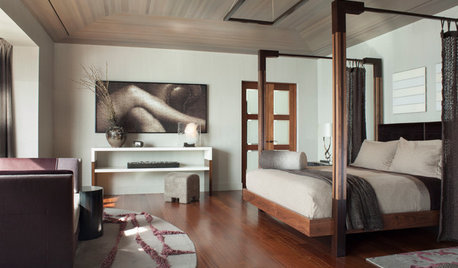

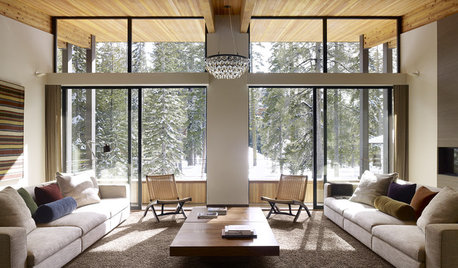
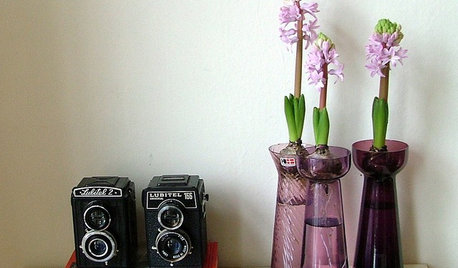
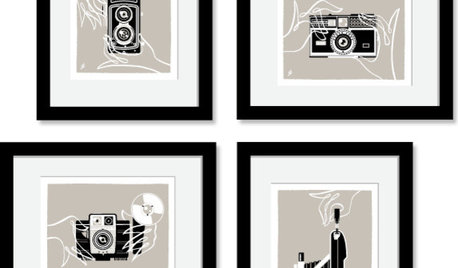
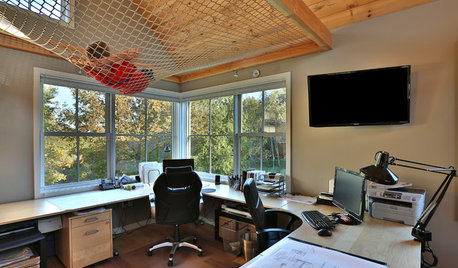

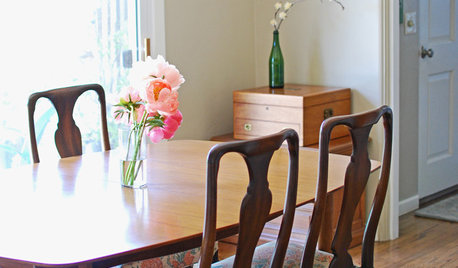
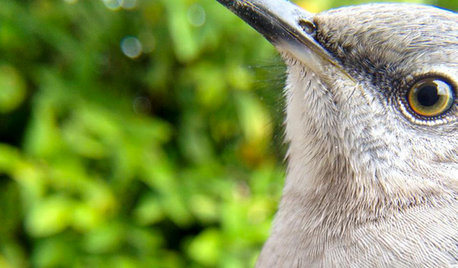






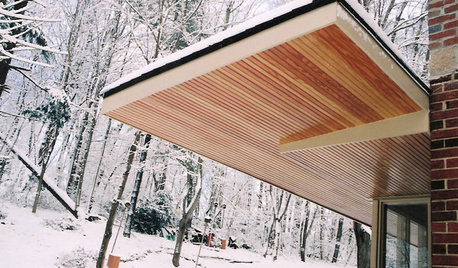

KC Clark - Zone 2012-6a OH